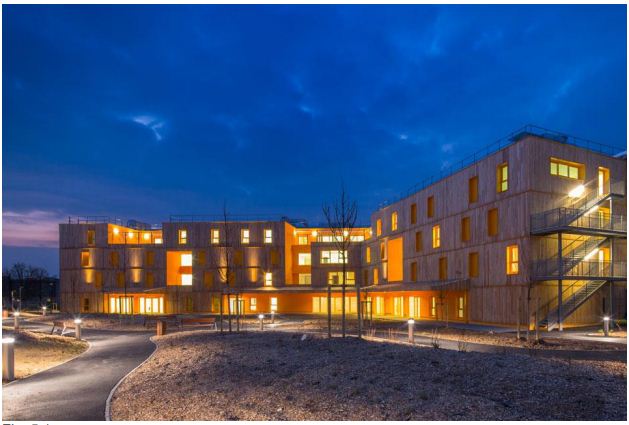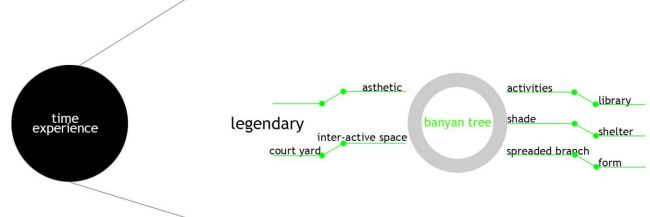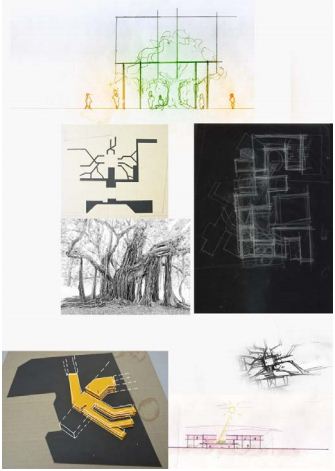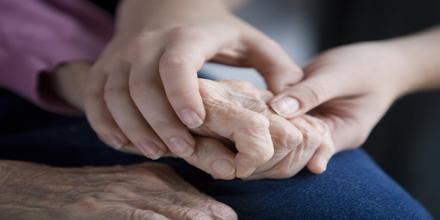Oboshor: Senior citizen health care and hospitality centre, Sreemangal, Sylhet
It’s a matter of sorrow that sometime our senior citizens are not welcome anymore to his/her home for their son/daughter. They can’t feel safe to their house. There are some place here the old people are not alone, and they are safe and found people who take cares of them. They need regular health care and hospitality. When people is getting aged they are not normal health position, they are weaker than matured aged person. So they need extra care. When people retire from their works they remain stay all time in their home. But they want to move to see the nature or cope up the retirement time. When one of the person of a couple die the another one becomes alone. That time they want a company but all family can’t give him/her a company. So that senior person needs a company. Most of the population of our country is very poor. Some family can’t afford the senior persons treatment expense, so they search an alternative way. They need safety and security due to their health condition. So there is a need created for the old age home and old age healthcare Centre. These old age homes provide much and more protection to these old people than that of their homes. This is because here in these old age homes there would be probably a large number of people who can depend on each other. There may be also volunteers here who care for this old people. Today the protection is doubled since most of these old age homes are run down by many religious communities. Thus old age homes are important in modern society.
Introduction:
Rapid growing of industry, modernization of Bangladesh, it has also effected the people in many ways. The tradition of joint family in the culture of Bangladeshi society is disappearing slowly, which was based on the love, affection and tradition. It has also transformed the life of family. People have started in believing in “Nuclear family” rather than combined or joint. It has made people to live with his own family which including husband, wife and their children. This culture has also affected the emotion of each individual person. In today’s time parents afraid from their children, that’s why they have started refusing to live with them (children). Due to this reason they have started moving in the old age home where they only which for death. The evolution of the population structure of Bangladesh is driven by decreasing mortality, increasing life expectancy and progress towards a more sustainable fertility. Given these characteristics the proportion of the population aged 60 years and above is expected to increase from 6% (2006) to 17% by 2050 and Bangladesh’s aged dependency ratio (retirees as a proportion of total labor force) is expected to rise from 6% (2010) to 15% by 2050 . Our country is developing and the moral value of people is decreasing. People are following the west. Once a time, there is no concept of old home in our country. But now the need of old home created. Sometimes they do not find any care for their heaths, they are also alone in their sons/daughter’s home. Some people have not any child and also there are no people for their take-care. In the old home our senior citizens stay and there are some people who care them in that home. It’s a social problem to ignore our senior citizen in their family. The true fact is that, we can’t prevent the DE morality of our society. So I think we need retirement home for our senior citizen.
BACKGROUND OF THE PROJECT
Project Brief: The rising of senior citizen populations are likely to exacerbate the existing challenges that are being faced by the elderly population. The elderly are in dire need of health and care services given the changing lifestyle and work environment and the greater global mobility of workforce is changing the traditional family system. Furthermore the health care system is overburdened as there is no dedicated health care facility for senior citizens. So govt. took a step to build a healthcare and residence for them. To address this concern the Government of Bangladesh, through the Ministry of Social Welfare are piloting a project to be implemented under a PPP modality for the provision of health care and ancillary services aimed for the elderly. Successful delivery of this project will enable Government to consider replicating this project in different parts of Bangladesh.
Aim and objective:
- All provide residential accommodation to the needy and/or interested old and aged persons long term facility
- It shall provide food and medical support and facilities to the old aged persons.
- Natural environment close to nature pollution free an green environment works as a mental tonic
- Combine of health and mental support from people of same age so better understanding.
- To promote National Integration and Unity of the Country
- To promote self-confidence and spirit of self-reliance among them to enable them to acquire necessary skills and guide them to achieve excellence in their fields of activity
- To improve the status of Health & Hygiene enjoyed by the community by full involvement of the members of the community
- It shall hire and employ professors , teachers , instructor , doctors , voids , hakims , nurses, servants, workmen and others and to pay them salaries, wages, gratuities and pensions or such other remuneration, honorarium as may necessary.
Historical Background:
The place was named Moulvibazar after Moulvi Kudratullah, who used to preach Islam here. He was one of the descendants of Hazrat Shah Mustafa (Ra), a companion of the great saint Hazrat Shah Jalal (Ra) who spread Islam all over Sylhet. In the 17th century Moulvi established a small bazaar near his house which was moulvibazar by the local inhabitants. In course of time this market flourished and the place became familiar as Moulvi bazar. However before the 14th century, i.e. before the Muslim era, this region is thought to have a majority of Hindu inhabitants. Hindu religious book revealed Moulvibazar as holy place and river Manu as divine tribute.
Population and Land of verities:

SWOT Analysis:
Strength:
- Natural rich green space
- No sound polluted area
- Birds creping sound
- Fertile land for gardening
- Land value is not high
Weakness:
- Heavy rainfall, so high drainage system require.
- Far away from urban area
- Transport system is not good as like unban area.
Opportunities:
- Make of healthy residence
- Making vegetation
- Enough space for making recreational space
LITERATURE REVIEW
Senior citizen is a common word for an old person used in our country, and sometimes in British English. It implies or means that the person being referred to is retired. This in turn usually implies or in fact means that the person is over the retirement age, which varies according to country. In our country in the age of 60 means retired person from govt. job. Some dictionaries describe widespread usage of “senior citizen” for people over the age of 65.
When defined in an official context, senior citizen is often used for legal or policy-related reasons in determining who is eligible for certain benefits available to the age group.
Physical marks of old age
Physical marks of old age include the following:
- Bone and joint. Old bones are marked by “thinning and shrinkage.” This results in a loss of height (about two inches by age 80), a stooping posture in many people, and a greater susceptibility to bone and joint diseases such as osteoarthritis and osteoporosis.
- Chronic diseases. Older persons have at least one chronic condition and many have multiple conditions. In 2007-2009, the most frequently occurring conditions among older persons in the United States were uncontrolled hypertension (34%), diagnosed arthritis (50%), and heart disease (32%).
- Dental problems. Less saliva and less ability for oral hygiene in old age increases the chance of tooth decay and infection.
- Digestive system. About 40% of the time, old age is marked by digestive disorders such as difficulty in swallowing, inability to eat enough and to absorb nutrition, constipation and bleeding.
- Diminished eyesight makes it more difficult to read in low lighting and in smaller print. Speed with which an individual reads and the ability to locate objects may also be impaired.
- Old age spells risk for injury from falls that might not cause injury to a younger person. Every year, about one-third of those 65 years old and over half of those 80 years old fall. Falls are the leading cause of injury and death for old people.
- Hairusually becomes thinner and grayer.
- By age 75 and older, 48% of men and 37% of women encounter impairments in hearing. Of the 26.7 million people over age 50 with a hearing impairment, only one in seven uses a hearing aid.
- Hearts are less efficient in old age with a resulting loss of stamina. In addition, atherosclerosis can constrict blood flow.
- Immune function. Less efficient immune function (Immunosenescence) is a mark of old age.
- Lungs expand less well; thus, they provide less oxygen.
- Pain afflicts old people at least 25% of the time, increasing with age up to 80% for those in nursing homes. Most pains are rheumatologically or malignant.
- Sexual activity decreases significantly with age, especially after age 60, for both women and men. Sexual drive in both men and women decreases as they age.
- Skin loses elasticity, becomes drier, and more lined and wrinkled.
- Sleep trouble holds a chronic prevalence of over 50% in old age and results in daytime sleepiness. In a study of 9,000 persons with a mean age of 74, only 12% reported no sleep complaints. By age 65, deep sleep goes down to about 5%.
- Taste buds diminish so that by age 80 taste buds are down to 50% of normal. Food becomes less appealing and nutrition can suffer.
- Urinary incontinenceis often found in old age.
- In old age, vocal cords weaken and vibrate more slowly. This results in a weakened, breathy voice that is sometimes called an “old person’s voice
Mental marks of old age include the following:
- Adaptable describes most people in their old age. In spite the stressfulness of old age, they are described as “agreeable” and “accepting.” However, old age dependence induces feelings of incompetence and worthlessness in a minority.
- Caution marks old age. This antipathy toward “risk-taking” stems from the fact that old people have less to gain and more to lose by taking risks than younger people.
- Depressed mood. According to Cox, Abramson, Devine, and Hollon (2012), old age is a risk factor for depression caused by prejudice (i.e., “DE prejudice”). When people are prejudiced against the elderly and then become old themselves, their anti-elderly prejudice turns inward, causing depression. “People with more negative age stereotypes will likely have higher rates of depression as they get older.” Old age depression results in the over-65 population having the highest suicide rate.
- Fear of crime in old age, especially among the frail, sometimes weighs more heavily than concerns about finances or health and restricts what they do. The fear persists in spite of the fact that old people are victims of crime less often than younger people.
- Mental disorders afflict about 15% of people aged 60+ according to estimates by the World Health Organization. Another survey taken in 15 countries reported that mental disorders of adults interfered with their daily activities more than physical problems.
- Reduced mental and cognitive ability afflicts old age. Memory loss is common in old age due to the decrease in speed of information being encoded, stored, and retrieved. It takes more time to learn new information. Dementia is a general term for memory loss and other intellectual abilities serious enough to interfere with daily life. Its prevalence increases in old age from about 10% at age 65 to about 50% over age 85.]Alzheimer’s disease accounts for 50 to 80 percent of dementia cases. Demented behavior can include wandering, physical aggression, verbal outbursts, depression, and psychosis.
- Set in one’s ways describes a mindset of old age. A study of over 400 distinguished men and women in old age found a “preference for the routine.” Explanations include old age’s toll on the “fluid intelligence” and the “more deeply entrenched” ways of the old.
Positive Psychology in Late Adulthood
Although old age brings fear to many because of the seemingly inescapable decline of health, there are many provocative people who defied the limitations and stereotypes of aging. One of those is Sadie Halper in. After 11 months of weight lifting and stationary bicycling, Sadie was able to escape hypertension and improve upon her health, from being stuck in a wheelchair, to being able to go out and shop on her own. Others also showed marked improvement in their cognitive skills at old age. John Rock, a medical researcher, stood above his younger contemporaries when he introduced the birth pill at 70 years old. Anna Mary Robertson, also known as “Grandma Moses,” became internationally famous after taking up painting at 78 years old. Lastly, Pablo Casals became known as the “greatest cellist” when he was already 95 years old. He even said in an interview once that he continue to practice 6 hours every day because he is still seeing progress in his performance. According to Stanley Rappaport (1994), chief of the Neuroscience Laboratory of the National Institute of Aging, although dendrites stop growing in the 90s, brain plasticity is at work – dendrites rewire to compensate for the loss of dead brain cells. Alzheimer’s Disease, although prevalent in the US, is also preventable. In a recent study involving 700 nuns, it was found out that Mankato nuns (from Minnesota) showed almost no signs for Alzheimer’s Disease, indicating that cognitive activities help in keeping the brain fully functional and healthy.
Keeping the body and mind healthy, and maintaining good relationships, are paramount to attaining positive aging. Valliant (2002) found that those who are happy and well at 75-80 years old did not smoke heavily, did not abuse alcohol, did some exercise, were not overweight, had stable marriage, and practiced good coping skills when they were 50. George (2001) also found out that those who engage in various activities, like going to church, attending meetings and trips, and exercising, are happier and more satisfied of their age than those who only sit at home. A sense of control is also important. Judith Rodin and Ellen Langer (1977) found that old adults who stay in elderly homes showed increased alertness, activity and happiness, and decreased mortality, when allowed to decide for themselves about what food to eat, what movies to see, who and when people can visit. Even death can be defied. Jeanne Lanin Calumet, a French, pushed the human life span to 122 years when she died in 1997.
These and other accomplishments and research show that old age should not be viewed negatively; rather, it should be seen and welcomed as another chapter in a person’s life.
Senior citizen hospitality Centre
Sometimes called an old people’s home, although this term can also refer to a nursing home is a multi-residence housing facility intended for senior citizens. All senior person in a family is not lucky enough to get care in their home or their relative’s home. Typically each person or couple in the home has an apartment-style room or suite of rooms. Additional facilities are provided within the building This can include facilities for meals, gatherings, recreation activities, and some form of health or hospice care A place in a retirement home can be paid for on a rental basis, like an apartment, or can be bought in perpetuity on the same basis as a condominium. A retirement home differs from a nursing home primarily in the level of medical care given.
Retirement villages and retirement communities, unlike retirement homes, offer separate and autonomous homes for residents. There are many different types of scheme, both to rent or to buy. They usually contain between 15 and 40 properties ranging in size from studios to 2, and occasionally 3 bedrooms. Properties in most schemes are designed to make life a little easier for older people – with features like raised electric sockets, lowered worktops, walk-in showers, and so on. Some are designed to accommodate wheelchair users.
New forms of sheltered housing have been pioneered in recent years, to cater for older people who are becoming more frail and less able to do everything for themselves. These are known as extra care, very sheltered or assisted living schemes. Most properties in these schemes will suit less mobile people and wheelchair users, and bathrooms particularly will be designed to make it easier for assistance to be offered. Schemes may have their own care staff, and will usually provide one or more meals each day, if required.
Advantages of Living in a Retirement Home
- Freedom from home maintenance and repair becomes more attractive during senior years.
- Downsizing offers an opportunity to consider which possessions are really important to you, rather than leaving this task to adult children at a point when you may be unable to do so.
- Social connections are vital to personal well-being and become more so as seniors leave careers.
- Many homes specialize in restaurant-style catering. Plans can include one, two or three meals a day. Private apartments include kitchens or kitchenettes for those times you want to cook, entertain or just be alone.
- Recreational activities are often available. These include exercise programs, social gatherings and planned outings. Many retirement homes employ trained activity directors. Because seniors are learning the value of physical activity, these residences are offering pools, walking trails and well-equipped gyms.
- Mental stimulation is readily available. Informal game tables are commonplace and movie nights are fun attractions. Speakers, classes and seminars are scheduled in most buildings, as well as trips to those events.
- Transportationis often available for trips to the store and any medical needs.
- A variety of professional services, including housekeeping and laundry service, a beauty salon and visiting medical personnel are often available.
- Assisted living services for those who need help with activities of daily living, medical security or possible memory care needs are provided at some homes.
- The choice of privacy or social interaction most hours of the day in a setting of security is one of the overall benefits of living in a retirement home.
Many people entering their retirement years proclaim they “will never leave their homes” and for many, that will be the right decision. But at least considering the benefits of a retirement home should be a part of planning for a long and fulfilling retirement.
Nursing homes:
A nursing home is a place for people who don’t need to be in a hospital but can’t be cared for at home. Most nursing homes have nursing aides and skilled nurses on hand 24 hours a day. Some nursing homes are set up like a hospital. The staff provides medical care, as well as physical, speech and occupational therapy. There might be a nurses’ station on each floor.
Other nursing homes try to be more like home. They try to have a neighborhood feel. Often, they don’t have a fixed day-to-day schedule, and kitchens might be open to residents. Staff members are encouraged to develop relationships with residents.
Some nursing homes have special care units for people with serious memory problems such as Alzheimer’s disease. Some will let couples live together. Nursing homes are not only for the elderly, but for anyone who requires 24-hour care. Whether you and your family are facing a quick decision about a nursing home due to a recent event, or have been coping with a worsening progressive disease such as Alzheimer’s or Parkinson’s, considering a nursing home is not an easy decision. Emotions such as guilt, sadness, frustration, and anger are normal.
Working through the possibilities of housing, finances, and medical needs can help you and your family make an informed decision.
Nursing home facilities:
- Cleanliness:For senior citizens need very cleanliness residence because their immune power is less than as young people.
- Food: They need food with very carefully, because their food habits can harm their health.
- Arrangement: Traditionally, nursing homes have been run like a medical facility, including a centralized nursing station with set medication and mealtimes. Some nursing homes, however, are now moving to a different model, with smaller communities and communal areas. If this type is available in your area, it may provide a more homely feel.
- Activities: They need some activities to fresh their mind such as gardening, angling, playing indoor and outdoor gaming.
- Experienced Stuff: To care their diseases there are some experienced stuff to care them.
CONTEXTUAL ANALYSIS
Maulvi Bazar District (Sylhet division) with an area of 2799.39 sq. km, is bounded by sylhet district on the north, Tripura state of India on the south, Assam and Tripura states of India on the east, and habiganj district on the west. Main rivers are manu, Dhalai, Juri, Gopala, etc; noted depressions: Hakaluki, Hail and Kawadighi Haors. Annual temperature: maximum 33.2°C, minimum 13.6°C; annual rainfall 3334 mm. The total forest area is 413.65 sq. km (about 15% of the total area of the district); noted forest ranges are Patharia, Sanrer Gaz or Longla, Rajkandi and Vanugachh. Maulvi Bazar (Town) stands on the bank of the River Manu. It consists of 9 wards and 47 mahallas. It has an area of 10.36 sq km; population 41358; male 54.97%, female 45.03%; density of population is 3992 per sq km. Literacy rate among the townpeople is 56.7%. Maulvi Bazar Municipality was established in 1930. The town has one Circuit House and one Rest House; Pashchim Bazar and Chowmuhana are the main commercial centres. Sreemangal Pourashava is located in the south-eastern corner of Moulvibazar district, the largest urban area in the Sreemangal Upazila. Sreemangal Pourashava is situated at 24018′ N latitude and 91043′30″ E longitudes. The location of the Pourashava within Moulvibazar District is shown in following Map. It is situated at the heart of Balishira Valley, full of tea gardens.
Sreemangal is surrounded by Ashidron Union on the south and south-western side, Sathgaon Union on the west, Kalighat union on the east and by Sreemangal Union on the north. Sreemangal is said to be the tea capital of Bangladesh. The gentle sloped hills here are very favorable for the tea production. Thus it is so “the land of two leaves and a bud”. It is also called Camellia, green carpet, ocean of green or Tea Mountain. The trees standing in rows on the hills with narrow streams of water flowing along them create a beautiful picture. Other trees like pineapple, rubber and lemon are planted in between tea trees to lend them required shelter from the sun’s heat. Together all these greens create a very appealing scenery. Besides the aroma there creates an outstanding atmosphere. The thick tea estates and fruit gardens and other surroundings fill the entire area with an amazing tranquility. Sreemangal has large tea estates, even the largest one in the world. Besides the tea gardens one can also see the processing of tea from leaves in the Tea Research Institute. Sreemangal is a hilly area covered with tea estates. There are 47 tea gardens in Sreemangal.
Sreemangal is the business nucleus of the district of Moulvibazar. It is larger than many district headquarters of the country in respect of economic importance. Her panoramic beauty has made it one of the nation’s most attractive tourist spots. Located midway between Sylhet,
Moulvibazar and Habigonj it has emerged as the communication junction for a lot of places. As an important trade and tea export center it has good road and railway connection with other areas of the region and beyond. The tea gardens are mainly responsible for the development of these roads. The tea gardens are connected by a network of roads with each other and with the surrounding marketing centers and railway stations. All the tea gardens are connected with Sreemangal either by railway and road or by both. A number of major roads connect the town with different urban centers including district headquarters. Major roads start from the northern part of the town, from the CBD of the Pourashava, at Moulvibazar Road Choumohuna. Railway also connects it to the port city, Chittagong. The District head Quarter Moulvibazar is only 20 Km. from here. The nearest Pourashava of Sreemangal is Komolgonj which is only 14 Km. north of it.
PROGRAM AND DEVELOPMENT
- Residence Facilities
- Nursing Homes Facilities
- Hotel/Guest house
Residence facilities spatial Qualities and Requirements
- Entrance foyer: 8sq. ftX150=1200 sq. ft. for each people
- Dining 25sq. ft X150=3750 sq. ft
- Living 40 sq. ft.X150=600 sq.ft
- Television room 40sq. ftX150=600 sq. ft
- Hallways: Hallways should be wide to allow two residents to pass with little difficulty. The building material used on the walls should allow the hanging of personal momentous and pictures without ruining the quality of the wall. Hand rails might also be provided but they are not necessary. This space will be sized according to need.
- Bedrooms: 3 types of bedrooms
- I) Small: 100sq. ftX2= 200sq. ft
- II) Medium: 150sq. ftX2= 300sq. ft
III) Large: 200sq. ftX2= 400sq. ft
- Bathroom 50sq. ftX2= 100sq. ft
- Utility and laundry room= 20sq. ft X 150= 300sq. ft
- Outdoor space 35sq. ftX150= 5250sq. ft
- Garage= 250sq. ft per car
Requirements of nursing homes:
- Nurse station: This space will be sized according to need.
- Clean workroom: 12sq. ftX 10= 120sq. ft
- Medicine room
- Solid workroom
- Nourishment station
- Equipment storage room
- Stretcher and wheel chair parking: 40sq. ft X 150= 600sq. ft
- Day room: 30sq. ft X 150= 4500sq. ft
- Physiotherapy: 3sq. ft per person
- Exercise space: This space will be sized according to need.
- Examination and massage space: 18sq. ft X per person need.
- Psychologist room : 200 sq. ft.
Hotel/Guest house facilities for senior citizens relatives:
- Rooms: 150sq. ft X 50= 750 sq. ft
- Kitchen room: 25sq. ftX 50= 1250 sq. ft
- Storage
- Stuff room: size depends on number and facilities.
- Parking : 128sq. ftX 25 car= 3200sq. ft
Recreation zone:
10000sq. ft
CASE STUDIES OF SIMILAR PROJECTS
Morangis retirement home
Location: Morangis, south Paris
Architects: (A. Becker, J. Paulré, P. Pfulghaupt)
Contractors: Immodieze, Axentia
Program: retirement home with 91 rooms
Cost: 9,4 million euro
Completion: January 2013
Built area: 5,315 square meters, 46 parking units
Total area: 9,950 square meters
Collaborators: Dumez IDF (general contractor), FACEA (fluids engineering) LECARPENTIER (exteriors and landscape) SPOOMS (kitchen engineering) CAP HORN (acoustics) LAPOINTE (roads and water engineering)
With a Y-shaped plan, the four-storey building features a main public entrance where the two Y strands connect. The north side harbors’ service, deliveries and the employee’s entrance, while the south façade opens towards a private park. All floors are accessible from the central node, which links all of the building’s functions and patient units. The architects sought to organise the plan according to a compact and rational planning, with an emphasis on opening towards the surroundings. Carefully framed views abound: living and main activity areas all face private gardens, which include therapeutically-themed spaces, a rose garden and several paths.
Corridors also include views of the outside, and are generously proportioned allowing residents to mode at their own pace. The third floor includes two large terraces, which, facing the park, function as a continuation of the interior spaces. The building is clad in Siberian larch wood, each opening becoming a single element in a varied rhythm. “Every time the outer skin is punched in to form a dent in the global volume this corresponds to a specific socializing space,” point out the architects. “Inner rest areas widely opened towards the park or the third floors terraces.” These “dents” allow for daylight to extensively penetrate the building. The architects chose yellow as a predominant colour for the building. The Morangis retirement home was based on an off-plan concept led by social contractor Axentia and private developer Immodieze.
It was built with financial suppot from the Conseil Général de l’Essone, the Regional Health Agency and the town of Morangis.
An orientated building
The building is constructed on 4 levels and is based on a Y-shaped plan. The building occupies the site as follows:
1) The main public entrance is located where the “Y’ strands connect
2) The north façade is dedicated to service, deliveries and employee’s entrance
3) The south façade is generously opened towards the residents private park

The rooms on floor one and two are dedicated to classical geriatric residents, the rooms are disposed into 6 units of 13 rooms each. The third floor is dedicated to patients suffering from Alzheimer’s disease or other similar neurological disorders. The floor includes vast dedicated spaces for specialized activities, rest and well-being. All the floors are accessible from the central node intersecting all of the buildings functions and patient units.
Concept Stage and Design Development
Concept: An interaction Space to prevent their loneliness. In our country Banyan tree shade is an interaction space.


In the centre, I set up a library and spread all functions.














